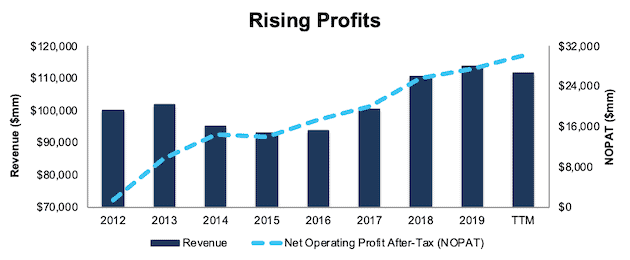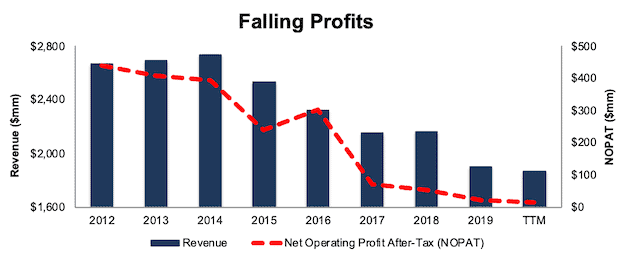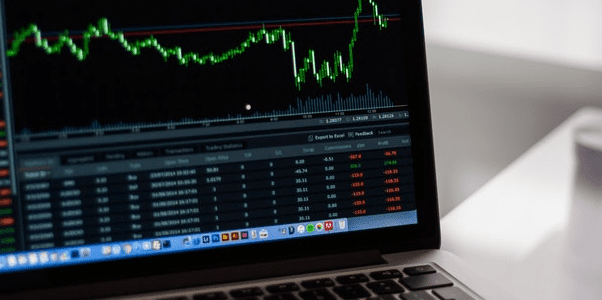Recap from May’s Picks
Our Most Attractive Stocks (+12.0%) outperformed the S&P 500 (+7.3%) from May 6, 2020 through June 1, 2020 by 4.7%. The best performing large cap stock gained 27% and the best performing small cap stock was up 52%. Overall, 28 out of the 40 Most Attractive stocks outperformed the S&P 500.
Our Most Dangerous Stocks (+11.0%) underperformed the S&P 500 (+7.3%) as a short portfolio from May 6, 2020 through June 1, 2020 by 3.7%. The best performing large cap stock fell by 1% and the best performing small cap stock fell by 2%. Overall, 9 out of the 23 Most Dangerous stocks outperformed the S&P 500 as shorts.
The Most Attractive/Most Dangerous Model Portfolios overperformed as an equal-weighted long/short portfolio by 1.0% last month.
Only our research utilizes the superior data and earnings adjustments featured by the HBS & MIT Sloan paper, "Core Earnings: New Data and Evidence.” The successes of these model portfolios highlight the value of our machine learning and AI Robo-Analyst technology[1], which helps clients fulfill the fiduciary duty of care and make smarter investments[2].
18 new stocks make our Most Attractive list this month, and 17 new stocks fall onto the Most Dangerous list this month. June’s Most Attractive and Most Dangerous stocks were made available to members on June 3, 2020.
Our Most Attractive stocks have high and rising returns on invested capital (ROIC) and low price to economic book value ratios. Most Dangerous stocks have misleading earnings and long growth appreciation periods implied by their market valuations.
Most Attractive Stocks Feature for June: Bank of America Corp (BAC: $28/share)
Bank of America Corp (BAC) is the featured stock from June’s Most Attractive Stocks Model Portfolio.
Bank of America has grown revenue by 4% compounded annually and after-tax profit (NOPAT) by 14% compounded annually over the past five years. Longer term, Bank of America has increased NOPAT by 4% compounded annually over the past decade.
Bank of America’s NOPAT margin increased from 1% in 2012 to 27% over the trailing-twelve-months (TTM) while its invested capital turns increased from 0.31 to 0.34 over the same time. The combination of rising margins and improved invested capital turns drive Bank of America’s ROIC from <1% in 2012 to 9% over the TTM.
Figure 1: Revenue & NOPAT Since 2012

Sources: New Constructs, LLC and company filings
BAC is Undervalued
At its current price of $28/share, BAC has a price-to-economic book value (PEBV) ratio of 0.7. This ratio means the market expects Bank of America’s NOPAT to permanently decline by 30% over the remaining life of the firm. This expectation seems overly pessimistic for a firm that grew NOPAT by 4% compounded annually over the past decade and 7% compounded annually over the past two decades.
Even if Bank of America’s NOPAT margin falls to 20% (five-year company average vs 27% TTM) and the firm grows NOPAT by just 1% compounded annually for the next decade, the stock is worth $38/share today – a 36% upside. See the math behind this reverse DCF scenario.
Critical Details Found in Financial Filings by Our Robo-Analyst Technology
As investors focus more on fundamental research, research automation technology is needed to analyze all the critical financial details in financial filings as shown in the Harvard Business School and MIT Sloan paper, "Core Earnings: New Data and Evidence”.
Below are specifics on the adjustments we make based on Robo-Analyst findings in Bank of America Corp’s 2019 10-K:
Income Statement: we made $8.5 billion of adjustments, with a net effect of removing $1.4 billion in non-operating expenses (<1% of revenue). You can see all the adjustments made to Bank of America’s income statement here.
Balance Sheet: we made $86.1 billion of adjustments to calculate invested capital with a net increase of $65.2 billion. One of the largest adjustments was $32.4 billion in goodwill. This adjustment represented 12% of reported net assets. You can see all the adjustments made to Bank of America’s balance sheet here.
Valuation: we made $36.8 billion of adjustments with a net effect of decreasing shareholder value by $29.4 billion. The most notable adjustment to shareholder value was $23.4 billion in preferred stock. This adjustment represents 10% of Bank of America’s market cap. See all adjustments to Bank of America’s valuation here.
Most Dangerous Stocks Feature: Teradata Corporation (TDC: $22/share)
Teradata Corporation (TDC) is the featured stock from June’s Most Dangerous Stocks Model Portfolio.
We put Teradata in the Danger Zone in January 2020 and since then, the stock has outperformed the S&P 500 as a short position (-14% vs S&P -1%).
Teradata’s revenue fell by 5% compounded annually from 2012 to 2019 and NOPAT declined by 35% compounded annually over the same time. Teradata’s NOPAT margin fell from 16% in 2012 to 1% TTM while ROIC declined from 33% to 1% over the same time.
Figure 2: Revenue & NOPAT Since 2012

Sources: New Constructs, LLC and company filings
TDC Provides Poor Risk/Reward
Despite its deteriorating fundamentals, TDC is still priced for significant profit growth and is overvalued.
To justify its current price of $22/share, Teradata must achieve a 6% NOPAT margin (five-year average vs 1% TTM) and grow NOPAT by 21% compounded annually for the next 11 years. See the math behind this reverse DCF scenario. This expectation seems overly optimistic given that Teradata’s NOPAT has fallen by 44% compounded annually over the past five years and 21% compounded annually over the past decade.
Even if Teradata can triple current margins to 3% (best since 2017) and grow NOPAT by 14% compounded annually for the next decade, the stock is worth just $8/share today, a 64% downside to the current stock price. See the math behind this reverse DCF scenario.
Each of these scenarios assumes Teradata is able to grow revenue, NOPAT, and FCF without increasing working capital or fixed assets. This assumption is unlikely, but allows us to create best-case scenarios that demonstrate how high expectations embedded in the current valuation are. For reference, Teradata’s invested capital grew by an average of $113 million (6% of TTM revenue) per year over the past decade.
Critical Details Found in Financial Filings by Our Robo-Analyst Technology
As investors focus more on fundamental research, research automation technology is needed to analyze all the critical financial details in financial filings as shown in the Harvard Business School and MIT Sloan paper, "Core Earnings: New Data and Evidence”.
Below are specifics on the adjustments we make based on Robo-Analyst findings in Teradata Corporation’s 2019 10-K:
Income Statement: we made $66 million of adjustments, with a net effect of removing $42 million in non-operating expenses (2% of revenue). You can see all the adjustments made to Teradata’s income statement here.
Balance Sheet: we made $1.3 billion of adjustments to calculate invested capital with a net increase of $315 million. One of the largest adjustments was $566 million in asset write-downs. This adjustment represented 48% of reported net assets. You can see all the adjustments made to Teradata’s balance sheet here.
Valuation: we made $1.1 billion of adjustments with a net effect of decreasing shareholder value by $511 million. Apart from total debt, the most notable adjustment to shareholder value was $141 million in underfunded pensions. This adjustment represents 6% of Teradata’s market cap. See all adjustments to Teradata’s valuation here.
This article originally published on June 11, 2020.
Disclosure: David Trainer, Kyle Guske II, and Matt Shuler receive no compensation to write about any specific stock, style, or theme.
Follow us on Twitter, Facebook, LinkedIn, and StockTwits for real-time alerts on all our research.
[1] Harvard Business School features the powerful impact of our research automation technology in the case New Constructs: Disrupting Fundamental Analysis with Robo-Analysts.
[2] This paper compares our analytics on a mega cap company to Bloomberg and Capital IQ (SPGI) in a detailed appendix.
